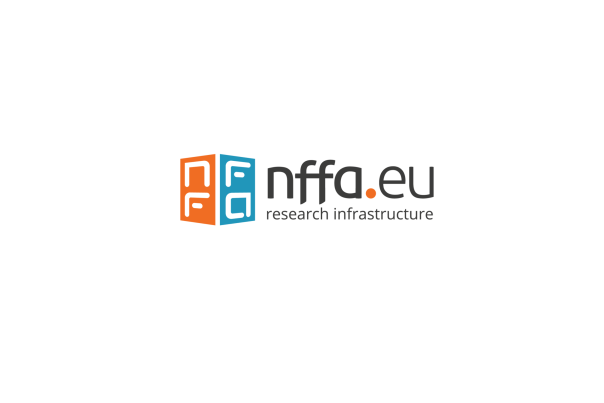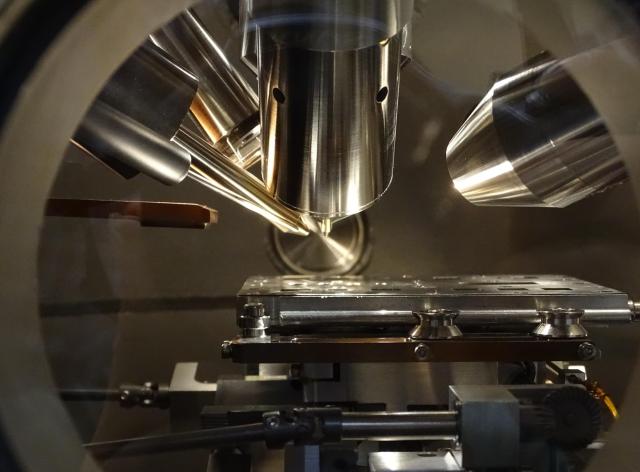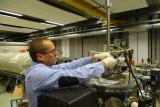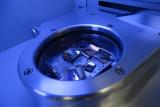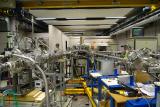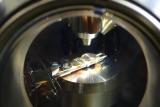La plateforme Synthèse, Irradiation et Analyse des Matériaux (SIAM) s'appuie sur sa capacité à utiliser et à combiner différentes spectroscopies (XPS, ToF-SIMS et IBA) pour caractériser les matériaux.
Ces techniques permettent une évaluation complète de presque tous les types d'échantillons, tels que : métaux, soudures, verre, polymères, poudres, liquides, matériaux biologiques in vivo, etc.
L'un des principaux atouts de SIAM est son expertise unique dans différentes techniques de spectroscopie (énergies élevées et faibles) qui peuvent être couplées à l'analyse nucléaire. Cela est rendu possible grâce à un équipement de pointe, une philosophie de développement constant et une équipe hautement qualifiée.
SIAM dispose de plusieurs installations pour la fonctionnalisation des matériaux et/ou la synthèse de films minces par traitements plasma.
L'expérience, acquise dans le cadre de plusieurs projets financés par la Commission européenne et des régions, qualifie la plateforme SIAM pour l'analyse d'échantillons complexes tels que : les nanoparticules dans des matrices complexes (aliments, milieux de culture, cellules issues d'expériences in vitro et organes issus d'expériences in vivo).
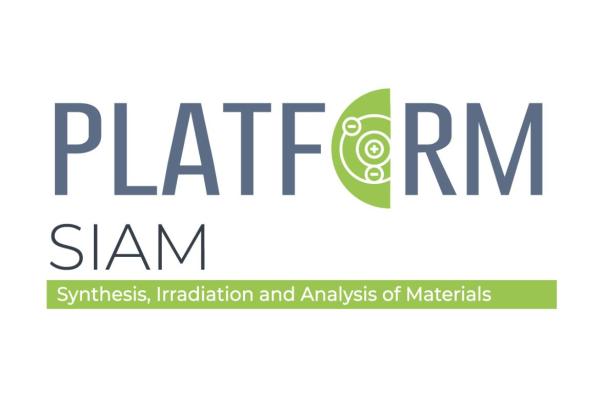
Spotlight
News
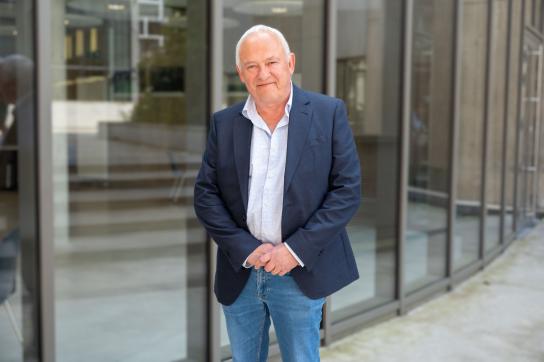
35 years between two accelerators - Serge Mathot's journey, or the art of welding history to physics
35 years between two accelerators - Serge Mathot's journey, or the art of welding history to physics
One foot in the past, the other in the future. From Etruscan granulation to PIXE analysis, Serge Mathot has built a unique career, between scientific heritage and particle accelerators. Portrait of a passionate alumnus at the crossroads of disciplines.
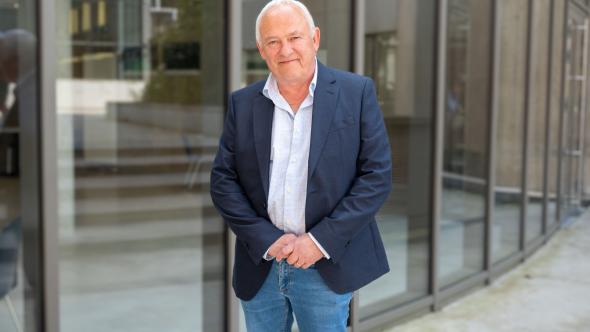
What prompted you to undertake your studies and then your doctorate in physics?
I was fascinated by the research field of one of my professors, Guy Demortier. He was working on the characterization of antique jewelry. He had found a way to differentiate by PIXE (Proton Induced X-ray Emission) analysis between antique and modern brazes that contained Cadmium, the presence of this element in antique jewelry being controversial at the time. He was interested in ancient soldering methods in general, and the granulation technique in particular. He studied them at the Laboratoire d'Analyses par Réaction Nucléaires (LARN). Brazing is an assembly operation involving the fusion of a filler metal (e.g. copper- or silver-based) without melting the base metal. This phenomenon allows a liquid metal to penetrate first by capillary action and then by diffusion at the interface of the metals to be joined, making the junction permanent after solidification. Among the jewels of antiquity, we find brazes made with incredible precision, the ancient techniques are fascinating.
Studying antique jewelry? Not what you'd expect in physics.
In fact, this was one of Namur's fields of research at the time: heritage sciences. Professor Demortier was conducting studies on a variety of jewels, but those made by the Etruscans using the so-called granulation technique, which first appeared in Eturia in the 8th century BC, are particularly incredible. It consists of depositing hundreds of tiny gold granules, up to two-tenths of a millimeter in diameter, on the surface to be decorated, and then soldering them onto the jewel without altering its fineness. So I also trained in brazing techniques and physical metallurgy.
The characterization of jewelry using LARN's particle accelerator, which enables non-destructive analysis, yields valuable information for heritage science.
This is, moreover, a current area of collaboration between the Department of Physics and the Department of History at UNamur (NDLR: notably through the ARC Phoenix project).
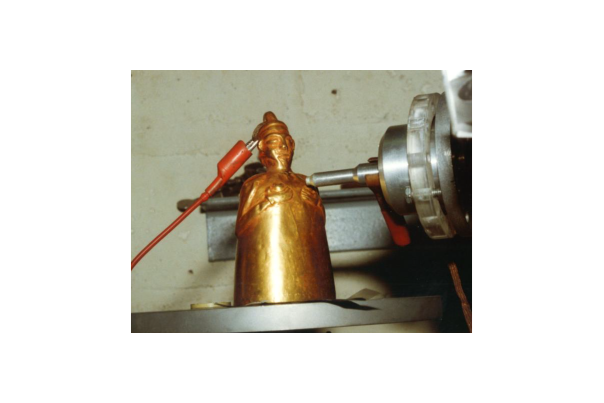
How did that help you land a job at CERN?
I applied for a position as a physicist at CERN in the field of vacuum and thin films, but was invited for the position of head of the vacuum brazing department. This department is very important for CERN as it studies methods for assembling particularly delicate and precise parts for accelerators. It also manufactures prototypes and often one-off parts. Broadly speaking, vacuum brazing is the same technique as the one we study at Namur, except that it is carried out in a vacuum chamber. This means no oxidation, perfect wetting of the brazing alloys on the parts to be assembled, and very precise temperature control to obtain very precise assemblies (we're talking microns!). I'd never heard of vacuum brazing, but my experience of Etruscan brazing, metallurgy and my background in applied physics as taught at Namur were of particular interest to the selection committee. They hired me right away!
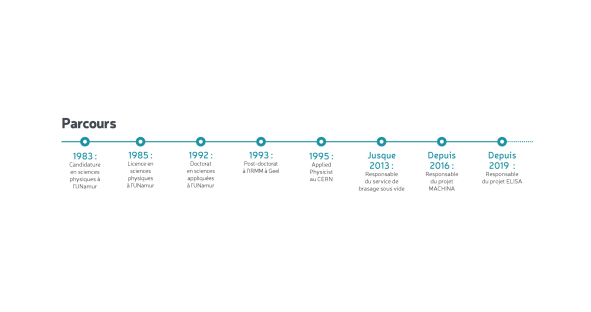
Tell us about CERN and the projects that keep you busy.
CERN is primarily known for hosting particle accelerators, including the famous LHC (Large Hadron Collider), a 27 km circumference accelerator buried some 100 m underground, which accelerates particles to 99.9999991% of the speed of light! CERN's research focuses on technology and innovation in many fields: nuclear physics, cosmic rays and cloud formation, antimatter research, the search for rare phenomena (such as the Higgs boson) and a contribution to neutrino research. It is also the birthplace of the World Wide Web (WWW). There are also projects in healthcare, medicine and partnerships with industry.
Nuclear physics at CERN is very different from what we do at UNamur with the ALTAÏS accelerator. But my training in applied physics (namuroise) has enabled me to integrate seamlessly into various research projects.
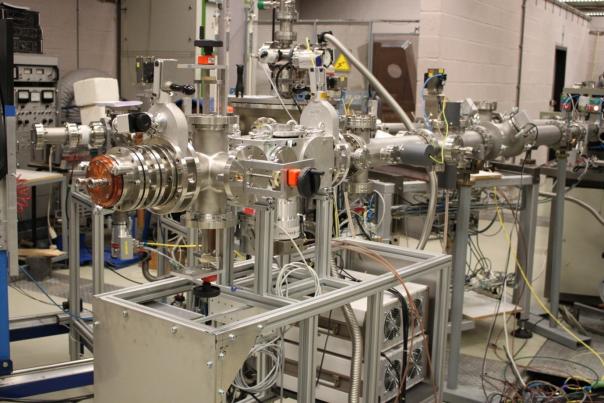
For my part, in addition to developing vacuum brazing methods, a field in which I've worked for over 20 years, I've worked a lot in parallel for the CLOUD experiment. For over 10 years, and until recently, I was its Technical Coordinator. CLOUD is a small but fascinating experiment at CERN which studies cloud formation and uses a particle beam to reproduce atomic bombardment in the laboratory in the manner of galactic radiation in our atmosphere. Using an ultra-clean 26 m³ cloud chamber, precise gas injection systems, electric fields, UV light systems and multiple detectors, we reproduce and study the Earth's atmosphere to understand whether galactic rays can indeed influence climate. This experiment calls on various fields of applied physics, and my background at UNamur has helped me once again.
I was also responsible for CERN's MACHINA project -Movable Accelerator for Cultural Heritage In situ Non-destructive Analysis - carried out in collaboration with the Istituto Nazionale di Fisica Nucleare (INFN), Florence section - Italy. Together, we have created the first portable proton accelerator for in-situ, non-destructive analysis in heritage science. MACHINA is soon to be used at the OPD (Opificio delle Pietre Dure), one of the oldest and most prestigious art restoration centers, also in Florence. The accelerator is also destined to travel to other museums or restoration centers.
Currently, I'm in charge of the ELISA (Experimental LInac for Surface Analysis) project. With ELISA, we're running a real proton accelerator for the first time in a place open to the public: the Science Gateway (SGW), CERN's new permanent exhibition center

ELISA uses the same accelerator cavity as MACHINA. The public can observe a proton beam extracted just a few centimetres from their eyes. Demonstrations are organized to show various physical phenomena, such as light production in gases or beam deflection with dipoles or quadrupoles, for example. The PIXE analysis method is also presented. ELISA is also a high-performance accelerator that we use for research projects in the field of heritage and others such as thin films, which are used extensively at CERN. The special feature is that the scientists who come to work with us do so in front of the public!
Do you have a story to tell?
I remember that in 1989, I finished typing my report for my IRSIA fellowship in the middle of the night, the day before the deadline. It had to be in by midnight the next day. There were very few computers back then, so I typed my report at the last minute on one of the secretaries' Macs. One false move and pow! all my data was gone - big panic! The next day, the secretary helped me restore my file, we printed out the document and I dropped it straight into the mailbox in Brussels, where I arrived after 11pm, in extremis, because at midnight, someone had come to close the mailbox. Fortunately, technology has come a long way since then...
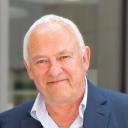
And I can't resist sharing two images 35 years apart!
To the left, a Gold statuette (Egypt), c. 2000 BC, analyzed at LARN - UNamur (photo 1990) and to the right, a copy (in Brass) of the Dame de Brassempouy, analyzed with ELISA - CERN (2025).
The "photographer" is the same, so we've come full circle...
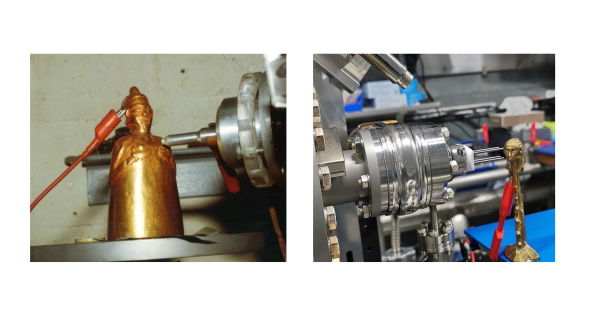
The proximity between teaching and research inspires and questions. This enables graduate students to move into multiple areas of working life.
Come and study in Namur!
Serge Mathot (May 2025) - Interview by Karin Derochette
Further information
- The CERN accelerators complex
- The Science Portal, CERN's public education and communication center
- Newsroom - June 2025 | The Departement of physics hosts a delegation from CERN
- Newsroom and Omalius Alumni article - September 2022 | François Briard
CERN - the science portal
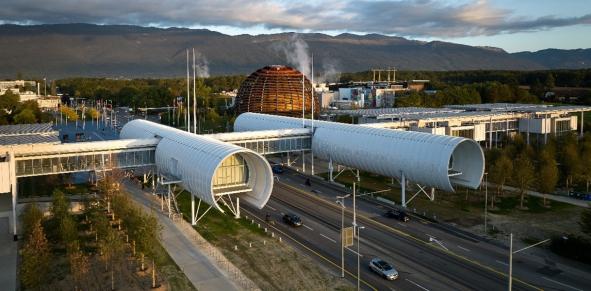
This article is taken from the "Alumni" section of Omalius magazine #38 (September 2025).
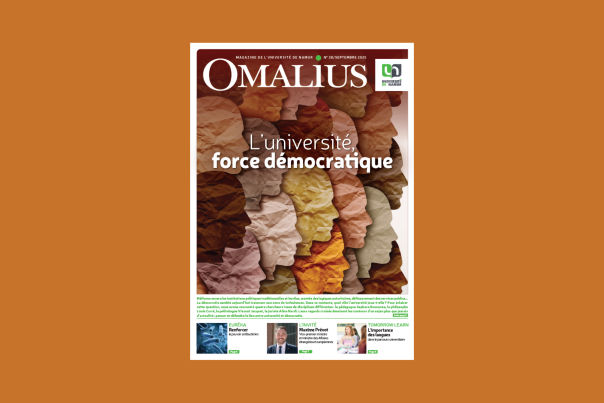
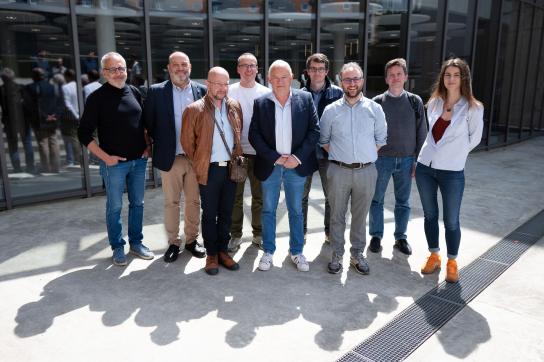
The Department of Physics welcomes a delegation from CERN
The Department of Physics welcomes a delegation from CERN
In May 2025, the Department of Physics welcomed two special visitors: Serge Mathot and François Briard from Namur, both alumni of UNamur and members of CERN. Several activities were on the program, ranging from a visit to the particle accelerator, to science popularization and thematic seminars, particularly in heritage sciences. The aim? To identify areas or activities in which UNamur and CERN could strengthen their collaboration.
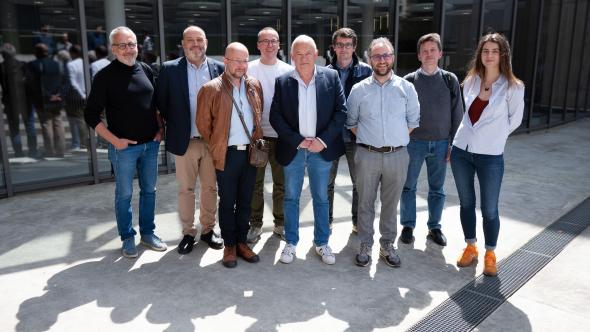
In the picture, from left to right: (top) Pierre Louette, Director of the Physics Department; François Briard, Head of the Science Portal Group (CERN); Julien Colaux, IBA specialist, physics researcher; Boris Hespeels, biology researcher; Alexandre Mayer, physics researcher; Anne-Catherine Heuskin, physics and biophysics researcher. (bottom) André Füzfa, astrophysicist and mathematics researcher; Serge Mathot, Applied Physicist (CERN) and Michaël Lobet, physics researcher.
The love affair between CERN and UNamur goes back a long way. CERN's accelerator complex and experimental program are very different and much larger than those of UNamur's Physics Department, but the fields in which the two institutions work have much in common.
In addition, both guests have a personal history with UNamur. The Physics Department was pleased to welcome Serge Mathot, Referent Applied Physicist (CERN) and alumni of the UNamur Physics Department (1992), as well as François Briard, Group Leader Science Portal (CERN), and alumni of the UNamur Faculty of Computer Science (1994).
The activities began with a meeting between the guests, Rector Annick Castiaux, Vice-Rector for Research Carine Michiels, Physics Department Director Pierre Louette and several other members of the Physics and Biology Department. After a general presentation of the University, the participants pointed out the missions shared by both institutions: research and the transfer of technology and knowledge, service to society, scientific popularization and education and training.
.
Focus on meetings
Physics lunch - CERN presentation
The physics lunch is the monthly meeting between students and members of the physics department and a professional, alumni or not, coming to explain his or her background and what he or she does on a daily basis as a physicist.
During this meeting, attended by around 80 people, François Briard and Serge Mathot presented CERN, the world's largest laboratory for particle physics. CERN's mission is to understand the most elementary particles and the laws of our universe.
At the end of the seminar, the students came away with stars in their eyes. Indeed, opportunities for internships or even first jobs at CERN are possible for physicists but also in many other fields.
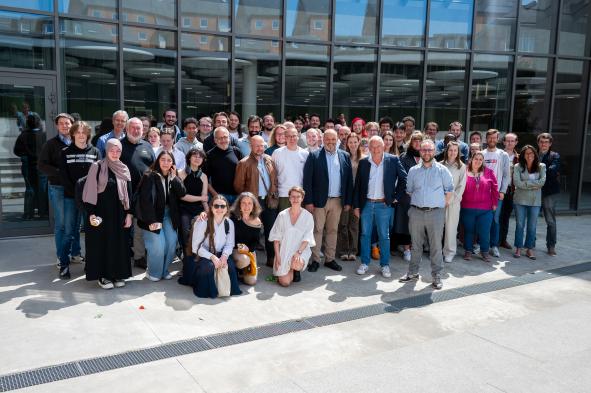

Your physics training at UNamur is your best ticket to a job at CERN. It's more than just a degree in particle physics!
Some internship programs at CERN are particularly well suited to the needs of young Belgian students.
The vast majority of physicists working with CERN (over 13,000) are in fact sent to CERN for varying periods of time by their employing national research institutes. CERN offers an exceptional opportunity to develop international experience under excellent conditions, in an environment that is unique in the world! What an inspiration for our young students!
Visit of the ALTAÏS and SIAM facilities
Capable of generating ion beams consisting of any stable element with energies of up to 16 Mega electron-Volt (MeV), the ALTAÏS particle accelerator is used in various fields of fundamental and applied research, notably through industrial partnerships. CERN's largest current linear accelerator can produce particle beams of up to 160 MeV.
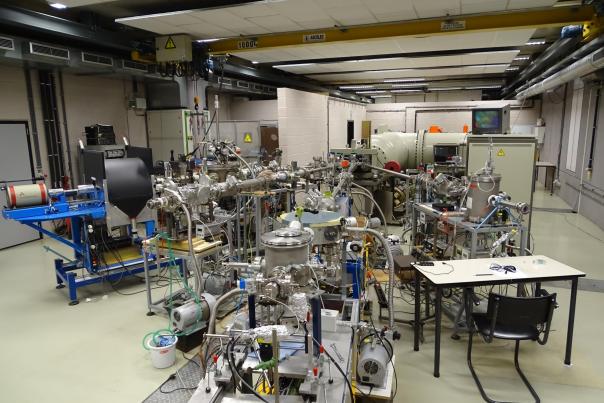
Meeting with members of the ARC PHOENIX project, complemented by a heritage science seminar given by Serge Mathot.
The projet d'Action Recherche Concertée (ARC) PHOENIX aims to renew our understanding of medieval parchments and ancient coins. Artificial intelligence will be exploited to analyze the data generated by material characterization.
This joint study between the Department of Physics and the Namur Institute of Structured Matter (NISM) and the Department of History and the Institut Patrimoines, Transmissions, Héritages (PaTHs) will address questions relating to the production chain and use of these objects and materials in past societies.
At the same time, Serge Mathot presented a seminar in heritage science attended by some 50 people. In particular, he presented his research and the brand-new ELISA accelerator: a miniaturized gas pedal capable of delivering a 2 MeV proton beam used to perform real measurements at the Science Portal.
Meeting on science popularization
Having the opportunity to exchange views with François Briard, Group Leader of the CERN Science Portal is a rare opportunity. Comparing outreach activities has opened up new avenues, discovering and sharing approaches, assessing what works and what doesn't, depending on the target audience. A highly satisfying enrichment for the members present from Confluent des Savoirs (CDS), the University of Namur's research outreach and dissemination service.
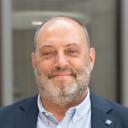
The CERN Science Portal is a place where you can explore CERN and science through authentic and innovative experiences: immersive multimedia exhibitions, hands-on lab workshops, science shows, events combining science and culture, prototyping workshops on the theme of innovation, tours of CERN sites, all accompanied by CERN staff.
BD Physix - Energy
Teachers André Füzfa and Michaël Lobet were able to present the comic strip project created with author Jean-Marc Dubois.
The theme? Energy!
What could be more natural than to talk about it with François Briard, chief popularizer at CERN, who is interested in this popularization project in a medium accessible to people aged 7 to 77!
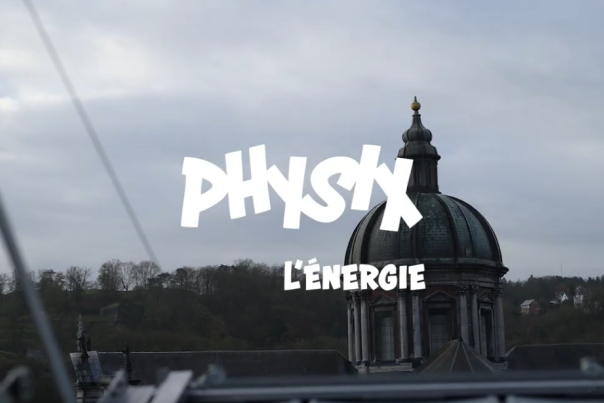
Meeting on the theme of biophysics
Professor Anne-Catherine Heuskin and Dr. Boris Hespeels are currently working on the BEBLOB project, a Belspo project with ESA support, as part of the UNIVERSEH (European Space University for Earth and Humanity) alliance. They are particularly interested in its astonishing ability to withstand high doses of radiation.
Anne-Catherine Heuskin also works in radiobiology. Particles are used to irradiate cancerous cells in order to destroy their genetic material and prevent them from proliferating: this is the basis of radiotherapy and proton therapy.
Meeting with FaSEF regarding teacher training opportunities.
The meeting confirmed the willingness of FaSEF and UNamur to get involved in coordinating the Belgian National Teacher Programme in French-speaking Belgium, which CERN intends to relaunch in 2026. Consideration was also given to other avenues for teacher training, such as CERN's forthcoming involvement in the "Salle des Pros", the training venue for the various players involved in teacher training at UNamur.
.A visit to TRAKK
The TRAKK is Namur's creative hub supported by 3 complementary partners in the field: BEP, KIKK, and UNamur. In addition to the venue, François Briard was able to visit the ProtoLab , which bridges the gap between ideas and industry by being a decentralized research and development hub accessible to SMEs and project leaders by offering advanced support in prototyping products or services.
Guests at CERN
François Briard - CERN Science Portal Group Leader, UNamur alumni 1994
Specialities:
- Information systems, administrative applications and databases (Oracle)
- Communications for the general public
- Visitor reception logistics
- Event organization for up to 80,000 participants.
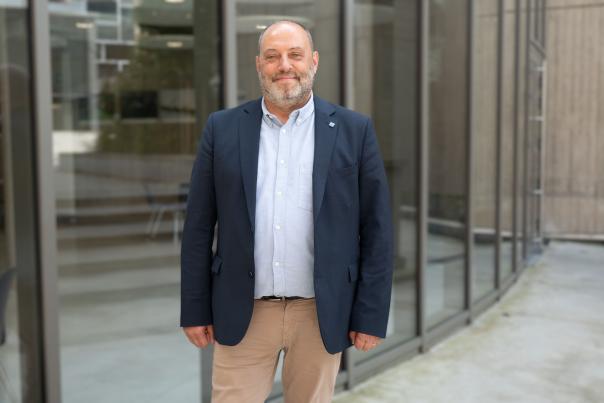
Graduating in law and information technology management (DGTIC) in 1994 after his bachelor's and master's degrees in computer science in 1993, François Briard works at CERN, the European Organization for Nuclear Research in Geneva, the world's largest particle physics laboratory.
During his school career, which was 100% at UNamur, he was vice-president of the Régionale namuroise and student delegate during his years as a candidate in economic and social sciences, computer science option.
Thanks to the multidisciplinary training provided at UNamur, he was able to seize several opportunities to redirect his career at CERN, where he was an information systems engineer from 1994 and then, from 2014, redirected his career until he became Group Leader of the Science Portal, which is CERN's general public communications center.
Serge Mathot - Referent Applied Physicist at CERN, UNamur alumni 1992
His specialties
- Ion Beam Analysis (IBA)
- Metallurgy, vacuum brazing
- Radio-Frequency Quadrupole (RFQ) linacs, ion sources
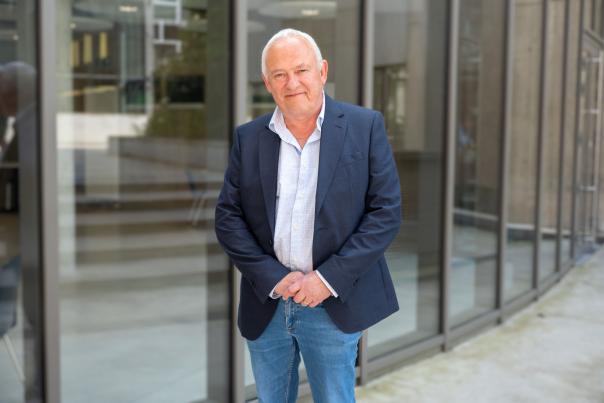
Serge Mathot obtained his doctorate in applied sciences from UNamur in 1992, following his bachelor's degree in physical sciences in 1985.
He then carried out a post-doctorate at the Joint Research Center (EU science hub) in Geel, which aims to bring together multidisciplinary skills to develop new measurement methods and tools such as reference materials.
He perfected his expertise in physical metallurgy before joining CERN in 1995 as a Referent Applied Physicist. He has worked on numerous research projects (CLOUD, MACHINA, ELISA...) and developed numerous parts for the manufacture of CERN's gas pedals.
It's a great pleasure to meet him.CERN
CERN, the European Organization for Nuclear Research, is one of the world's largest and most prestigious scientific laboratories. Its vocation is fundamental physics, the discovery of the constituents and laws of the Universe. It uses highly complex scientific instruments to probe the ultimate constituents of matter: the fundamental particles. By studying what happens when these particles collide, physicists understand the laws of Nature.
The instruments used at CERN are particle gas pedals and detectors. Gas pedals carry beams of particles at high energies to collide with other beams or fixed targets. Detectors observe and record the results of these collisions.
Founded in 1954, CERN is located on either side of the French-Swiss border, near Geneva. It was one of the first organizations on a European scale and today has 25 member states, including Belgium.
Physics programs at UNamur
From the infinitely small to the infinitely large, from elementary particles to galaxies, are you thirsty to understand the whys and wherefores of the natural phenomena you observe? Physics answers all your questions.
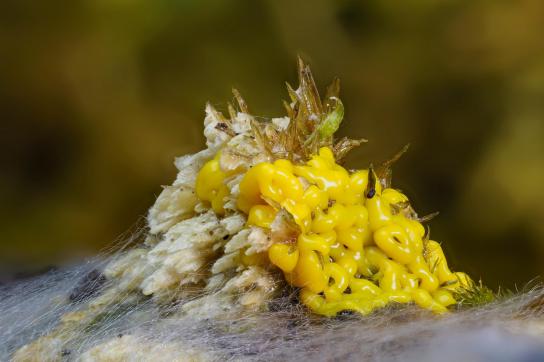
UNamur and the blob on board the International Space Station with Belgian astronaut Raphaël Liegéois
UNamur and the blob on board the International Space Station with Belgian astronaut Raphaël Liegéois
The three Belgian scientific experiments selected to be carried out on board the International Space Station (ISS) during astronaut Raphaël Liégeois' mission in 2026 have just been unveiled by the Federal Science Policy Public Service (Belspo). One of them is carried by a team from UNamur for an experiment at the crossroads of biology and physics aimed at analyzing the resistance of the "blob", an atypical unicellular organism.
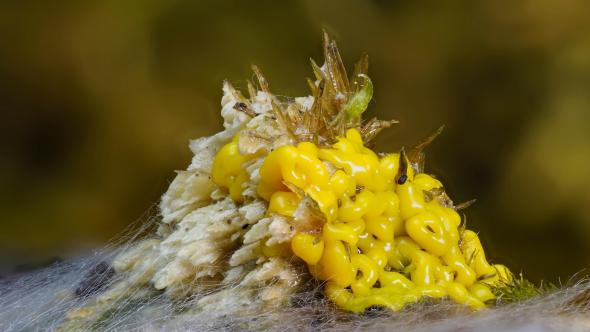
The three scientific experiments were selected from 29 projects for "their scientific value, technical feasibility and budgetary compatibility", states the public service of Federal Science Policy (Belspo).
Historically, Belgium has built up notable expertise and influence within the European Space Agency (ESA). Today, UNamur finds itself at the heart of an experiment that will be deployed during Belgian astronaut Raphaël Liegéois's stay aboard the ISS in 2026. The BeBlob project, conducted at the interface of biology and physics, aims to study Physarum polycephalum, commonly known as a "blob".
The amazing properties of the blob
This atypical unicellular organism, belonging to neither plants, fungi nor animals, fascinates scientists and the general public alike. "Although lacking a nervous system, the blob is capable of solving complex problems, such as finding the shortest path through a maze, and learning from its environment," explains Boris Hespeels.
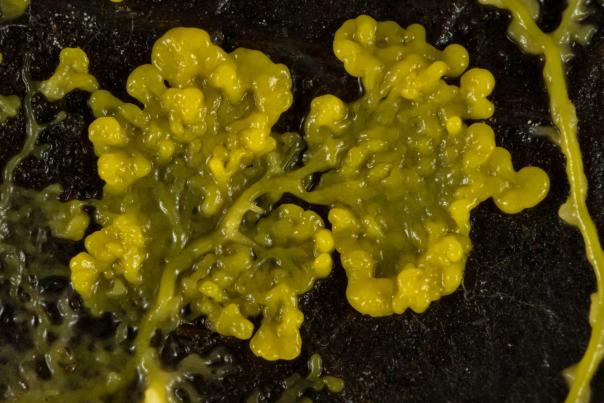
Boris Hespeels is a researcher at the ILEE Institute and the Beblob project leader alongside Anne-Catherine Heuskin, a researcher at the Narilis Institute. "We're also interested in its amazing ability to dry out completely and survive extreme stresses, including the vacuum of space, extreme temperatures or even high doses of radiation causing massive DNA damage," the two Namur researchers continue.
Development of a miniaturized vessel for the blob
Building on their experience gained on previous ISS missions with other biological models, UNamur teams have developed a new miniaturized "vessel" for carrying different blob samples. In orbit, the astronaut will rehydrate the samples, which will then have to adapt to their new environment. The objectives are twofold: firstly, to assess the effects of the orbital environment on blob metabolism; secondly, to study DNA repair in samples previously irradiated on Earth by massive doses. Scientists will analyze how this organism repairs its genome in microgravity, and determine whether this process is altered by spaceflight.
Implications and potential applications
This work should make it possible to identify key players in cell protection and repair under extreme conditions. Combined with the many experiments carried out at UNamur, they could ultimately lead to the development of new molecules capable of protecting astronauts, preserving fragile biological samples or even limiting the side effects of radiotherapy by protecting patients' healthy cells.
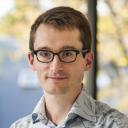
Despite the recent - and controversial - media coverage of tourist flights, space remains today, and will probably remain so for years to come, an environment that is difficult to access and hostile to human presence. The International Space Station (ISS), assembled in the early 2000s, was designed as an immense laboratory for studying phenomena impossible to reproduce on Earth, and for analyzing the impact of microgravity and exposure to cosmic radiation on living organisms. To prepare for the future of exploration, which will include new orbital stations, a sustainable return to the Moon and, eventually, the installation of man on Mars, the study of the adaptation of living organisms and the protection of astronauts are a priority for space agencies. At the same time, fundamental research continues to focus on the origin of life and the possibility of its existence elsewhere in the Universe.
.
Raising awareness among young people and inspiring vocations
Finally, the BeBlob project is in line with UNamur's vocation to disseminate science to as many people as possible. A didactic and educational component will thus accompany the experiment: Physarum polycephalum will be introduced into schools to highlight research, the human adventure experienced by the Belgian astronaut within the ISS, and to spark scientific vocations thanks to the inspiring combination between space exploration and the extraordinary properties of this organism.
.
Space mission 2026
Discover the other scientific experiments selected to be carried out on board the International Space Station (ISS) during astronaut Raphaël Liégeois's mission in 2026
A Federal Science Policy SPP project (BELSPO-Belgian Science Policy Office), with the support of the European Space Agency (ESA).
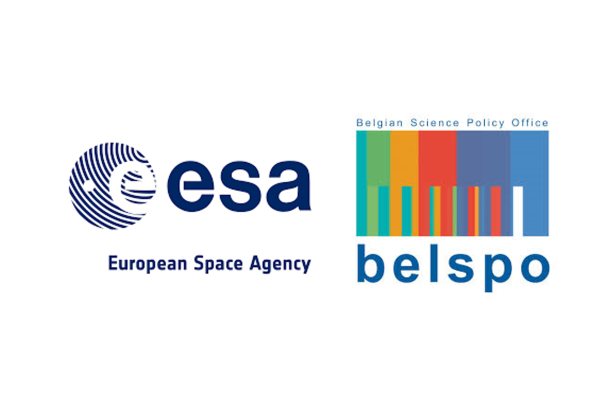
UNIVERSEH (European Space University for Earth and Humanity) is part of the "European Universities" initiative promoted by the European Commission. Its ambition is to develop a space to meet the societal, social and environmental challenges arising from European space policy.
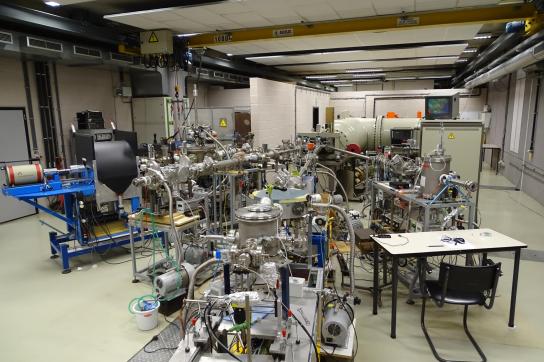
ALTAïS - Penetrating the depths of matter to meet today's challenges
ALTAïS - Penetrating the depths of matter to meet today's challenges
Founded some 50 years ago, the Laboratoire d'Analyse par Réactions Nucléaires (LARN) in the Department of Physics at the University of Namur is home to a 2MV tandem particle gas pedal named ALTAÏS (Accélérateur Linéaire Tandetron pour l'Analyse et l'Implantation des Solides), in operation since 1999.
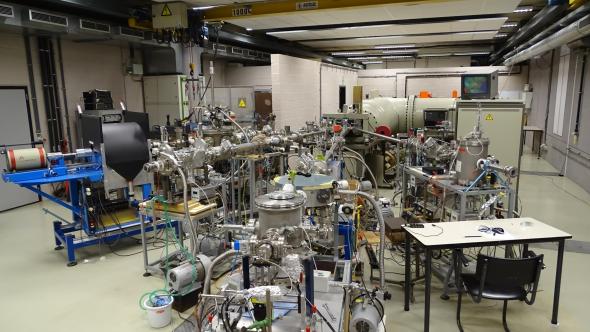
This article was produced for the "Eureka" section of Omalius magazine #36, March 2025.
Capable of generating ion beams consisting of any stable element with energies of up to 16 Mega electron-Volt (MeV), the particle gas pedal enables the analysis (IBA) and modification (IBMM) of thin films of many materials. Stimulated by the critical need for new functional materials, the development of these techniques has accelerated in the 21st century. They are essential in many areas of fundamental research, and are also used in applied research, through industrial partnerships.
.Tailor-made innovative developments
Tijani Tabarrant's role is essential to ensure the smooth running of this complex equipment. He is responsible for its maintenance to ensure continuity in research. At the same time, he makes a significant contribution to the research by designing and developing various vacuum chambers, which are crucial to our experiments. To carry out these projects, he works closely with the mechanical workshop, whose expertise and resources are indispensable.
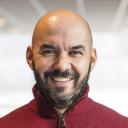
Thanks to their support, I can transform my designs into functional prototypes, benefiting from their machining and assembly know-how. This synergy between my work and the mechanical workshop strengthens our ability to innovate to meet the laboratory's scientific challenges, while ensuring safe and efficient operations.
Cutting-edge technologies to meet the challenges of the future
The strength of IBMM (Ion Beam Modification of Materials) is its ability to modify the electronic, optical, mechanical or magnetic properties of various materials in a controlled way. This is known as "functionalizing materials".
IBA (Ion Beam Analysis) is a family of non-invasive, highly versatile analysis techniques for studying the chemical composition of materials. It has played a leading role for decades in nuclear astrophysics, materials science, life sciences and even heritage and archaeological sciences.
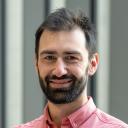
Thanks to the gas pedal and a very special system, it is possible, for example, to reproduce and measure the nuclear reactions that occur in stars. These data are essential for nuclear astrophysicists to better understand stellar evolution.
Materials
In microelectronics, ion implantation, essential for doping semiconductors, is a key stage in the manufacture of electronic chips. The IBA makes it possible to analyze the presence of these dopants, as well as that of hydrogen, an element that can influence the lifespan of electronic components.
In nuclear energy, ion beam irradiation makes it possible to simulate the effects of radiative damage on materials used for nuclear fuel cladding or radioactive waste storage. In this way, their long-term durability can be assessed.
.In reactors, hydrogen from hydrolysis can weaken fuel protection claddings. The IBA makes it possible to study these phenomena in order to improve their resistance. In addition, the use of gamma spectroscopy to characterize radioactive waste is essential to meet a major challenge: that of dismantling nuclear power plants.

In the aerospace field, ion beam irradiation is used to test the resistance of space materials to cosmic radiation, improving the design of satellites and spacecraft.
For hydrogen production and storage, the IBA helps design anti-diffusion coatings. Hydrogen is a tiny atom that diffuses easily through materials. Hydrogen storage is a key issue for the energy transition.
In everyday life, telephone screens, windscreens and even windows benefit from surface treatments that modulate their opacity, as well as their anti-scratch, anti-reflective or anti-smudge properties. These effects are achieved through the synthesis and optimization of thin surface layers, in collaboration with the glass industry. The IBA enables the characterization of these thin films, which helps in the development of new functionalities.
.Life sciences
One of ALTAïS's terminal stations is dedicated to studying the response of cells to radiation (protons, helium, carbon).
Thus, researchers can carry out studies on:
- the generation of radioresistant cancer cells and the development of strategies to re-sensitize them,
- the involvement of mitochondria in resistance to radiotherapy;
- the influence of membrane lipid composition on the response to radiotherapy treatment
They are studying the FLASH effect - very high dose rate irradiation - on a worm C. elegans. The FLASH effect not only maintains tumor control but also spares healthy tissue, which is of key importance in tumor treatment.
They are also reprogramming immune system cells with gold nanoparticles and ionizing radiation (X-ray or proton).
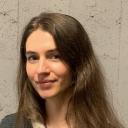
In radiobiology, we use particles to irradiate cancer cell cultures to destroy their genetic material and prevent them from proliferating. This is the basis of radiotherapy and proton therapy.
In the 2000s, the researchers contributed to in-vivo studies on the incorporation of fluorine into tooth enamel, which improved our understanding of tooth mineralization processes.
More recently, the gas pedal has also been used to irradiate rotifers before sending them to the ISS international space station, as well as ants in order to analyze and quantify their resistance under extreme conditions.
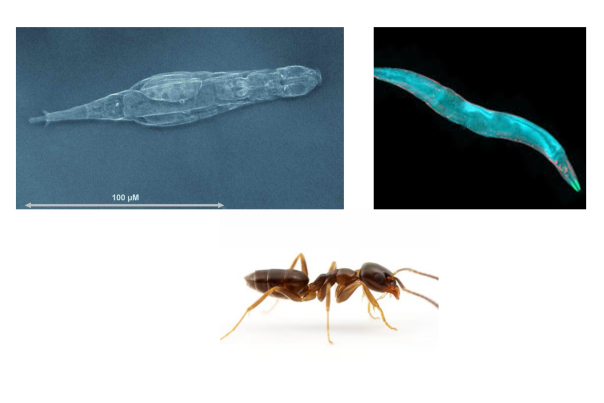
Geological, archaeological and cultural heritage
At UNamur's Department of Physics, Professor Guy Demortier, was one of the pioneers in the use of IBAs to characterize ancient objects or fossils. These analyses help to determine the manufacturing methods and provenance of the materials used to make historical artefacts, as is the case at the AGLAE laboratory, based in the Louvre museum, which carries out this type of analysis on a daily basis. Analysis of the coloration of natural geological objects (e.g. speleothems) also provides its share of information about the evolution of the climate and environment of a particular geological area.
But they can also be fossils. The study of an Anchiornis Huxleyi, the dinosaur that could be the missing link to the evolution of birds, for example, revealed the presence of sulfur, probably corresponding to the presence of a feather.
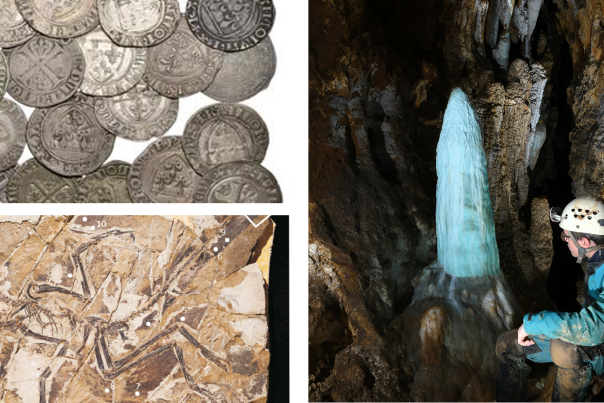
With the recent arrival of Professor Julien Colaux, a new impetus has been gained and is part of a broader perspective.
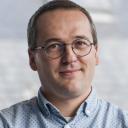
We are currently developing a new line of research in heritage science, reflected in particular by the launch of the interdisciplinary ARC-Phoenix project in October 2024. This project brings together researchers in physics, archaeology and history who are working to renew our understanding of medieval parchments and ancient coins. Artificial intelligence will be harnessed to analyze the data generated.
The ALTAïS gas pedal is part of the state-of-the-art equipment of the SIAM (Synthesis, Irradiation and Analysis of Materials) technology platform.
Researchers from the NISM Institutes, NARILIS and ILEE use it daily to push back the boundaries of the unknown. The Department also hosts practical work activities by physics and biology students.
Building on their long experience in functional (nano)materials, microelectronics, photovoltaics, batteries, life sciences and heritage sciences, the multidisciplinary teams of researchers are key players in the understanding of matter in the fundamental sense, physical interactions on the atomic scale and the development of new technologies applied to today's global challenges.
Research topics in the Physics Department
The Department of Physics is divided into 4 promising and original research themes:
- The physics of living organisms
- Materials: synthesis, simulations and analysis
- Optics and photonics
- Physics didactics
This article is taken from the "Eureka" section of Omalius magazine #36 (March 2025).
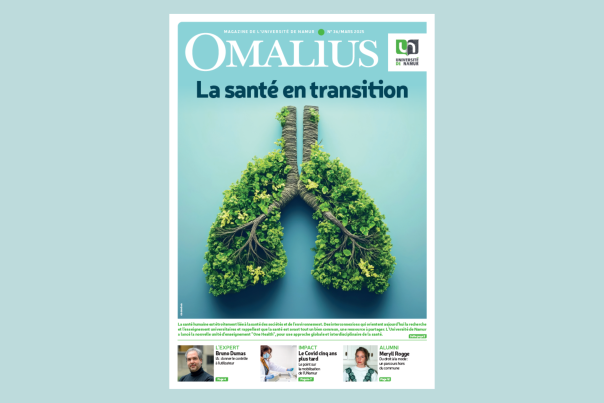

35 years between two accelerators - Serge Mathot's journey, or the art of welding history to physics
35 years between two accelerators - Serge Mathot's journey, or the art of welding history to physics
One foot in the past, the other in the future. From Etruscan granulation to PIXE analysis, Serge Mathot has built a unique career, between scientific heritage and particle accelerators. Portrait of a passionate alumnus at the crossroads of disciplines.

What prompted you to undertake your studies and then your doctorate in physics?
I was fascinated by the research field of one of my professors, Guy Demortier. He was working on the characterization of antique jewelry. He had found a way to differentiate by PIXE (Proton Induced X-ray Emission) analysis between antique and modern brazes that contained Cadmium, the presence of this element in antique jewelry being controversial at the time. He was interested in ancient soldering methods in general, and the granulation technique in particular. He studied them at the Laboratoire d'Analyses par Réaction Nucléaires (LARN). Brazing is an assembly operation involving the fusion of a filler metal (e.g. copper- or silver-based) without melting the base metal. This phenomenon allows a liquid metal to penetrate first by capillary action and then by diffusion at the interface of the metals to be joined, making the junction permanent after solidification. Among the jewels of antiquity, we find brazes made with incredible precision, the ancient techniques are fascinating.
Studying antique jewelry? Not what you'd expect in physics.
In fact, this was one of Namur's fields of research at the time: heritage sciences. Professor Demortier was conducting studies on a variety of jewels, but those made by the Etruscans using the so-called granulation technique, which first appeared in Eturia in the 8th century BC, are particularly incredible. It consists of depositing hundreds of tiny gold granules, up to two-tenths of a millimeter in diameter, on the surface to be decorated, and then soldering them onto the jewel without altering its fineness. So I also trained in brazing techniques and physical metallurgy.
The characterization of jewelry using LARN's particle accelerator, which enables non-destructive analysis, yields valuable information for heritage science.
This is, moreover, a current area of collaboration between the Department of Physics and the Department of History at UNamur (NDLR: notably through the ARC Phoenix project).

How did that help you land a job at CERN?
I applied for a position as a physicist at CERN in the field of vacuum and thin films, but was invited for the position of head of the vacuum brazing department. This department is very important for CERN as it studies methods for assembling particularly delicate and precise parts for accelerators. It also manufactures prototypes and often one-off parts. Broadly speaking, vacuum brazing is the same technique as the one we study at Namur, except that it is carried out in a vacuum chamber. This means no oxidation, perfect wetting of the brazing alloys on the parts to be assembled, and very precise temperature control to obtain very precise assemblies (we're talking microns!). I'd never heard of vacuum brazing, but my experience of Etruscan brazing, metallurgy and my background in applied physics as taught at Namur were of particular interest to the selection committee. They hired me right away!

Tell us about CERN and the projects that keep you busy.
CERN is primarily known for hosting particle accelerators, including the famous LHC (Large Hadron Collider), a 27 km circumference accelerator buried some 100 m underground, which accelerates particles to 99.9999991% of the speed of light! CERN's research focuses on technology and innovation in many fields: nuclear physics, cosmic rays and cloud formation, antimatter research, the search for rare phenomena (such as the Higgs boson) and a contribution to neutrino research. It is also the birthplace of the World Wide Web (WWW). There are also projects in healthcare, medicine and partnerships with industry.
Nuclear physics at CERN is very different from what we do at UNamur with the ALTAÏS accelerator. But my training in applied physics (namuroise) has enabled me to integrate seamlessly into various research projects.

For my part, in addition to developing vacuum brazing methods, a field in which I've worked for over 20 years, I've worked a lot in parallel for the CLOUD experiment. For over 10 years, and until recently, I was its Technical Coordinator. CLOUD is a small but fascinating experiment at CERN which studies cloud formation and uses a particle beam to reproduce atomic bombardment in the laboratory in the manner of galactic radiation in our atmosphere. Using an ultra-clean 26 m³ cloud chamber, precise gas injection systems, electric fields, UV light systems and multiple detectors, we reproduce and study the Earth's atmosphere to understand whether galactic rays can indeed influence climate. This experiment calls on various fields of applied physics, and my background at UNamur has helped me once again.
I was also responsible for CERN's MACHINA project -Movable Accelerator for Cultural Heritage In situ Non-destructive Analysis - carried out in collaboration with the Istituto Nazionale di Fisica Nucleare (INFN), Florence section - Italy. Together, we have created the first portable proton accelerator for in-situ, non-destructive analysis in heritage science. MACHINA is soon to be used at the OPD (Opificio delle Pietre Dure), one of the oldest and most prestigious art restoration centers, also in Florence. The accelerator is also destined to travel to other museums or restoration centers.
Currently, I'm in charge of the ELISA (Experimental LInac for Surface Analysis) project. With ELISA, we're running a real proton accelerator for the first time in a place open to the public: the Science Gateway (SGW), CERN's new permanent exhibition center

ELISA uses the same accelerator cavity as MACHINA. The public can observe a proton beam extracted just a few centimetres from their eyes. Demonstrations are organized to show various physical phenomena, such as light production in gases or beam deflection with dipoles or quadrupoles, for example. The PIXE analysis method is also presented. ELISA is also a high-performance accelerator that we use for research projects in the field of heritage and others such as thin films, which are used extensively at CERN. The special feature is that the scientists who come to work with us do so in front of the public!
Do you have a story to tell?
I remember that in 1989, I finished typing my report for my IRSIA fellowship in the middle of the night, the day before the deadline. It had to be in by midnight the next day. There were very few computers back then, so I typed my report at the last minute on one of the secretaries' Macs. One false move and pow! all my data was gone - big panic! The next day, the secretary helped me restore my file, we printed out the document and I dropped it straight into the mailbox in Brussels, where I arrived after 11pm, in extremis, because at midnight, someone had come to close the mailbox. Fortunately, technology has come a long way since then...

And I can't resist sharing two images 35 years apart!
To the left, a Gold statuette (Egypt), c. 2000 BC, analyzed at LARN - UNamur (photo 1990) and to the right, a copy (in Brass) of the Dame de Brassempouy, analyzed with ELISA - CERN (2025).
The "photographer" is the same, so we've come full circle...

The proximity between teaching and research inspires and questions. This enables graduate students to move into multiple areas of working life.
Come and study in Namur!
Serge Mathot (May 2025) - Interview by Karin Derochette
Further information
- The CERN accelerators complex
- The Science Portal, CERN's public education and communication center
- Newsroom - June 2025 | The Departement of physics hosts a delegation from CERN
- Newsroom and Omalius Alumni article - September 2022 | François Briard
CERN - the science portal

This article is taken from the "Alumni" section of Omalius magazine #38 (September 2025).


The Department of Physics welcomes a delegation from CERN
The Department of Physics welcomes a delegation from CERN
In May 2025, the Department of Physics welcomed two special visitors: Serge Mathot and François Briard from Namur, both alumni of UNamur and members of CERN. Several activities were on the program, ranging from a visit to the particle accelerator, to science popularization and thematic seminars, particularly in heritage sciences. The aim? To identify areas or activities in which UNamur and CERN could strengthen their collaboration.

In the picture, from left to right: (top) Pierre Louette, Director of the Physics Department; François Briard, Head of the Science Portal Group (CERN); Julien Colaux, IBA specialist, physics researcher; Boris Hespeels, biology researcher; Alexandre Mayer, physics researcher; Anne-Catherine Heuskin, physics and biophysics researcher. (bottom) André Füzfa, astrophysicist and mathematics researcher; Serge Mathot, Applied Physicist (CERN) and Michaël Lobet, physics researcher.
The love affair between CERN and UNamur goes back a long way. CERN's accelerator complex and experimental program are very different and much larger than those of UNamur's Physics Department, but the fields in which the two institutions work have much in common.
In addition, both guests have a personal history with UNamur. The Physics Department was pleased to welcome Serge Mathot, Referent Applied Physicist (CERN) and alumni of the UNamur Physics Department (1992), as well as François Briard, Group Leader Science Portal (CERN), and alumni of the UNamur Faculty of Computer Science (1994).
The activities began with a meeting between the guests, Rector Annick Castiaux, Vice-Rector for Research Carine Michiels, Physics Department Director Pierre Louette and several other members of the Physics and Biology Department. After a general presentation of the University, the participants pointed out the missions shared by both institutions: research and the transfer of technology and knowledge, service to society, scientific popularization and education and training.
.
Focus on meetings
Physics lunch - CERN presentation
The physics lunch is the monthly meeting between students and members of the physics department and a professional, alumni or not, coming to explain his or her background and what he or she does on a daily basis as a physicist.
During this meeting, attended by around 80 people, François Briard and Serge Mathot presented CERN, the world's largest laboratory for particle physics. CERN's mission is to understand the most elementary particles and the laws of our universe.
At the end of the seminar, the students came away with stars in their eyes. Indeed, opportunities for internships or even first jobs at CERN are possible for physicists but also in many other fields.


Your physics training at UNamur is your best ticket to a job at CERN. It's more than just a degree in particle physics!
Some internship programs at CERN are particularly well suited to the needs of young Belgian students.
The vast majority of physicists working with CERN (over 13,000) are in fact sent to CERN for varying periods of time by their employing national research institutes. CERN offers an exceptional opportunity to develop international experience under excellent conditions, in an environment that is unique in the world! What an inspiration for our young students!
Visit of the ALTAÏS and SIAM facilities
Capable of generating ion beams consisting of any stable element with energies of up to 16 Mega electron-Volt (MeV), the ALTAÏS particle accelerator is used in various fields of fundamental and applied research, notably through industrial partnerships. CERN's largest current linear accelerator can produce particle beams of up to 160 MeV.

Meeting with members of the ARC PHOENIX project, complemented by a heritage science seminar given by Serge Mathot.
The projet d'Action Recherche Concertée (ARC) PHOENIX aims to renew our understanding of medieval parchments and ancient coins. Artificial intelligence will be exploited to analyze the data generated by material characterization.
This joint study between the Department of Physics and the Namur Institute of Structured Matter (NISM) and the Department of History and the Institut Patrimoines, Transmissions, Héritages (PaTHs) will address questions relating to the production chain and use of these objects and materials in past societies.
At the same time, Serge Mathot presented a seminar in heritage science attended by some 50 people. In particular, he presented his research and the brand-new ELISA accelerator: a miniaturized gas pedal capable of delivering a 2 MeV proton beam used to perform real measurements at the Science Portal.
Meeting on science popularization
Having the opportunity to exchange views with François Briard, Group Leader of the CERN Science Portal is a rare opportunity. Comparing outreach activities has opened up new avenues, discovering and sharing approaches, assessing what works and what doesn't, depending on the target audience. A highly satisfying enrichment for the members present from Confluent des Savoirs (CDS), the University of Namur's research outreach and dissemination service.

The CERN Science Portal is a place where you can explore CERN and science through authentic and innovative experiences: immersive multimedia exhibitions, hands-on lab workshops, science shows, events combining science and culture, prototyping workshops on the theme of innovation, tours of CERN sites, all accompanied by CERN staff.
BD Physix - Energy
Teachers André Füzfa and Michaël Lobet were able to present the comic strip project created with author Jean-Marc Dubois.
The theme? Energy!
What could be more natural than to talk about it with François Briard, chief popularizer at CERN, who is interested in this popularization project in a medium accessible to people aged 7 to 77!

Meeting on the theme of biophysics
Professor Anne-Catherine Heuskin and Dr. Boris Hespeels are currently working on the BEBLOB project, a Belspo project with ESA support, as part of the UNIVERSEH (European Space University for Earth and Humanity) alliance. They are particularly interested in its astonishing ability to withstand high doses of radiation.
Anne-Catherine Heuskin also works in radiobiology. Particles are used to irradiate cancerous cells in order to destroy their genetic material and prevent them from proliferating: this is the basis of radiotherapy and proton therapy.
Meeting with FaSEF regarding teacher training opportunities.
The meeting confirmed the willingness of FaSEF and UNamur to get involved in coordinating the Belgian National Teacher Programme in French-speaking Belgium, which CERN intends to relaunch in 2026. Consideration was also given to other avenues for teacher training, such as CERN's forthcoming involvement in the "Salle des Pros", the training venue for the various players involved in teacher training at UNamur.
.A visit to TRAKK
The TRAKK is Namur's creative hub supported by 3 complementary partners in the field: BEP, KIKK, and UNamur. In addition to the venue, François Briard was able to visit the ProtoLab , which bridges the gap between ideas and industry by being a decentralized research and development hub accessible to SMEs and project leaders by offering advanced support in prototyping products or services.
Guests at CERN
François Briard - CERN Science Portal Group Leader, UNamur alumni 1994
Specialities:
- Information systems, administrative applications and databases (Oracle)
- Communications for the general public
- Visitor reception logistics
- Event organization for up to 80,000 participants.

Graduating in law and information technology management (DGTIC) in 1994 after his bachelor's and master's degrees in computer science in 1993, François Briard works at CERN, the European Organization for Nuclear Research in Geneva, the world's largest particle physics laboratory.
During his school career, which was 100% at UNamur, he was vice-president of the Régionale namuroise and student delegate during his years as a candidate in economic and social sciences, computer science option.
Thanks to the multidisciplinary training provided at UNamur, he was able to seize several opportunities to redirect his career at CERN, where he was an information systems engineer from 1994 and then, from 2014, redirected his career until he became Group Leader of the Science Portal, which is CERN's general public communications center.
Serge Mathot - Referent Applied Physicist at CERN, UNamur alumni 1992
His specialties
- Ion Beam Analysis (IBA)
- Metallurgy, vacuum brazing
- Radio-Frequency Quadrupole (RFQ) linacs, ion sources

Serge Mathot obtained his doctorate in applied sciences from UNamur in 1992, following his bachelor's degree in physical sciences in 1985.
He then carried out a post-doctorate at the Joint Research Center (EU science hub) in Geel, which aims to bring together multidisciplinary skills to develop new measurement methods and tools such as reference materials.
He perfected his expertise in physical metallurgy before joining CERN in 1995 as a Referent Applied Physicist. He has worked on numerous research projects (CLOUD, MACHINA, ELISA...) and developed numerous parts for the manufacture of CERN's gas pedals.
It's a great pleasure to meet him.CERN
CERN, the European Organization for Nuclear Research, is one of the world's largest and most prestigious scientific laboratories. Its vocation is fundamental physics, the discovery of the constituents and laws of the Universe. It uses highly complex scientific instruments to probe the ultimate constituents of matter: the fundamental particles. By studying what happens when these particles collide, physicists understand the laws of Nature.
The instruments used at CERN are particle gas pedals and detectors. Gas pedals carry beams of particles at high energies to collide with other beams or fixed targets. Detectors observe and record the results of these collisions.
Founded in 1954, CERN is located on either side of the French-Swiss border, near Geneva. It was one of the first organizations on a European scale and today has 25 member states, including Belgium.
Physics programs at UNamur
From the infinitely small to the infinitely large, from elementary particles to galaxies, are you thirsty to understand the whys and wherefores of the natural phenomena you observe? Physics answers all your questions.

UNamur and the blob on board the International Space Station with Belgian astronaut Raphaël Liegéois
UNamur and the blob on board the International Space Station with Belgian astronaut Raphaël Liegéois
The three Belgian scientific experiments selected to be carried out on board the International Space Station (ISS) during astronaut Raphaël Liégeois' mission in 2026 have just been unveiled by the Federal Science Policy Public Service (Belspo). One of them is carried by a team from UNamur for an experiment at the crossroads of biology and physics aimed at analyzing the resistance of the "blob", an atypical unicellular organism.

The three scientific experiments were selected from 29 projects for "their scientific value, technical feasibility and budgetary compatibility", states the public service of Federal Science Policy (Belspo).
Historically, Belgium has built up notable expertise and influence within the European Space Agency (ESA). Today, UNamur finds itself at the heart of an experiment that will be deployed during Belgian astronaut Raphaël Liegéois's stay aboard the ISS in 2026. The BeBlob project, conducted at the interface of biology and physics, aims to study Physarum polycephalum, commonly known as a "blob".
The amazing properties of the blob
This atypical unicellular organism, belonging to neither plants, fungi nor animals, fascinates scientists and the general public alike. "Although lacking a nervous system, the blob is capable of solving complex problems, such as finding the shortest path through a maze, and learning from its environment," explains Boris Hespeels.

Boris Hespeels is a researcher at the ILEE Institute and the Beblob project leader alongside Anne-Catherine Heuskin, a researcher at the Narilis Institute. "We're also interested in its amazing ability to dry out completely and survive extreme stresses, including the vacuum of space, extreme temperatures or even high doses of radiation causing massive DNA damage," the two Namur researchers continue.
Development of a miniaturized vessel for the blob
Building on their experience gained on previous ISS missions with other biological models, UNamur teams have developed a new miniaturized "vessel" for carrying different blob samples. In orbit, the astronaut will rehydrate the samples, which will then have to adapt to their new environment. The objectives are twofold: firstly, to assess the effects of the orbital environment on blob metabolism; secondly, to study DNA repair in samples previously irradiated on Earth by massive doses. Scientists will analyze how this organism repairs its genome in microgravity, and determine whether this process is altered by spaceflight.
Implications and potential applications
This work should make it possible to identify key players in cell protection and repair under extreme conditions. Combined with the many experiments carried out at UNamur, they could ultimately lead to the development of new molecules capable of protecting astronauts, preserving fragile biological samples or even limiting the side effects of radiotherapy by protecting patients' healthy cells.

Despite the recent - and controversial - media coverage of tourist flights, space remains today, and will probably remain so for years to come, an environment that is difficult to access and hostile to human presence. The International Space Station (ISS), assembled in the early 2000s, was designed as an immense laboratory for studying phenomena impossible to reproduce on Earth, and for analyzing the impact of microgravity and exposure to cosmic radiation on living organisms. To prepare for the future of exploration, which will include new orbital stations, a sustainable return to the Moon and, eventually, the installation of man on Mars, the study of the adaptation of living organisms and the protection of astronauts are a priority for space agencies. At the same time, fundamental research continues to focus on the origin of life and the possibility of its existence elsewhere in the Universe.
.
Raising awareness among young people and inspiring vocations
Finally, the BeBlob project is in line with UNamur's vocation to disseminate science to as many people as possible. A didactic and educational component will thus accompany the experiment: Physarum polycephalum will be introduced into schools to highlight research, the human adventure experienced by the Belgian astronaut within the ISS, and to spark scientific vocations thanks to the inspiring combination between space exploration and the extraordinary properties of this organism.
.
Space mission 2026
Discover the other scientific experiments selected to be carried out on board the International Space Station (ISS) during astronaut Raphaël Liégeois's mission in 2026
A Federal Science Policy SPP project (BELSPO-Belgian Science Policy Office), with the support of the European Space Agency (ESA).

UNIVERSEH (European Space University for Earth and Humanity) is part of the "European Universities" initiative promoted by the European Commission. Its ambition is to develop a space to meet the societal, social and environmental challenges arising from European space policy.

ALTAïS - Penetrating the depths of matter to meet today's challenges
ALTAïS - Penetrating the depths of matter to meet today's challenges
Founded some 50 years ago, the Laboratoire d'Analyse par Réactions Nucléaires (LARN) in the Department of Physics at the University of Namur is home to a 2MV tandem particle gas pedal named ALTAÏS (Accélérateur Linéaire Tandetron pour l'Analyse et l'Implantation des Solides), in operation since 1999.

This article was produced for the "Eureka" section of Omalius magazine #36, March 2025.
Capable of generating ion beams consisting of any stable element with energies of up to 16 Mega electron-Volt (MeV), the particle gas pedal enables the analysis (IBA) and modification (IBMM) of thin films of many materials. Stimulated by the critical need for new functional materials, the development of these techniques has accelerated in the 21st century. They are essential in many areas of fundamental research, and are also used in applied research, through industrial partnerships.
.Tailor-made innovative developments
Tijani Tabarrant's role is essential to ensure the smooth running of this complex equipment. He is responsible for its maintenance to ensure continuity in research. At the same time, he makes a significant contribution to the research by designing and developing various vacuum chambers, which are crucial to our experiments. To carry out these projects, he works closely with the mechanical workshop, whose expertise and resources are indispensable.

Thanks to their support, I can transform my designs into functional prototypes, benefiting from their machining and assembly know-how. This synergy between my work and the mechanical workshop strengthens our ability to innovate to meet the laboratory's scientific challenges, while ensuring safe and efficient operations.
Cutting-edge technologies to meet the challenges of the future
The strength of IBMM (Ion Beam Modification of Materials) is its ability to modify the electronic, optical, mechanical or magnetic properties of various materials in a controlled way. This is known as "functionalizing materials".
IBA (Ion Beam Analysis) is a family of non-invasive, highly versatile analysis techniques for studying the chemical composition of materials. It has played a leading role for decades in nuclear astrophysics, materials science, life sciences and even heritage and archaeological sciences.

Thanks to the gas pedal and a very special system, it is possible, for example, to reproduce and measure the nuclear reactions that occur in stars. These data are essential for nuclear astrophysicists to better understand stellar evolution.
Materials
In microelectronics, ion implantation, essential for doping semiconductors, is a key stage in the manufacture of electronic chips. The IBA makes it possible to analyze the presence of these dopants, as well as that of hydrogen, an element that can influence the lifespan of electronic components.
In nuclear energy, ion beam irradiation makes it possible to simulate the effects of radiative damage on materials used for nuclear fuel cladding or radioactive waste storage. In this way, their long-term durability can be assessed.
.In reactors, hydrogen from hydrolysis can weaken fuel protection claddings. The IBA makes it possible to study these phenomena in order to improve their resistance. In addition, the use of gamma spectroscopy to characterize radioactive waste is essential to meet a major challenge: that of dismantling nuclear power plants.

In the aerospace field, ion beam irradiation is used to test the resistance of space materials to cosmic radiation, improving the design of satellites and spacecraft.
For hydrogen production and storage, the IBA helps design anti-diffusion coatings. Hydrogen is a tiny atom that diffuses easily through materials. Hydrogen storage is a key issue for the energy transition.
In everyday life, telephone screens, windscreens and even windows benefit from surface treatments that modulate their opacity, as well as their anti-scratch, anti-reflective or anti-smudge properties. These effects are achieved through the synthesis and optimization of thin surface layers, in collaboration with the glass industry. The IBA enables the characterization of these thin films, which helps in the development of new functionalities.
.Life sciences
One of ALTAïS's terminal stations is dedicated to studying the response of cells to radiation (protons, helium, carbon).
Thus, researchers can carry out studies on:
- the generation of radioresistant cancer cells and the development of strategies to re-sensitize them,
- the involvement of mitochondria in resistance to radiotherapy;
- the influence of membrane lipid composition on the response to radiotherapy treatment
They are studying the FLASH effect - very high dose rate irradiation - on a worm C. elegans. The FLASH effect not only maintains tumor control but also spares healthy tissue, which is of key importance in tumor treatment.
They are also reprogramming immune system cells with gold nanoparticles and ionizing radiation (X-ray or proton).

In radiobiology, we use particles to irradiate cancer cell cultures to destroy their genetic material and prevent them from proliferating. This is the basis of radiotherapy and proton therapy.
In the 2000s, the researchers contributed to in-vivo studies on the incorporation of fluorine into tooth enamel, which improved our understanding of tooth mineralization processes.
More recently, the gas pedal has also been used to irradiate rotifers before sending them to the ISS international space station, as well as ants in order to analyze and quantify their resistance under extreme conditions.

Geological, archaeological and cultural heritage
At UNamur's Department of Physics, Professor Guy Demortier, was one of the pioneers in the use of IBAs to characterize ancient objects or fossils. These analyses help to determine the manufacturing methods and provenance of the materials used to make historical artefacts, as is the case at the AGLAE laboratory, based in the Louvre museum, which carries out this type of analysis on a daily basis. Analysis of the coloration of natural geological objects (e.g. speleothems) also provides its share of information about the evolution of the climate and environment of a particular geological area.
But they can also be fossils. The study of an Anchiornis Huxleyi, the dinosaur that could be the missing link to the evolution of birds, for example, revealed the presence of sulfur, probably corresponding to the presence of a feather.

With the recent arrival of Professor Julien Colaux, a new impetus has been gained and is part of a broader perspective.

We are currently developing a new line of research in heritage science, reflected in particular by the launch of the interdisciplinary ARC-Phoenix project in October 2024. This project brings together researchers in physics, archaeology and history who are working to renew our understanding of medieval parchments and ancient coins. Artificial intelligence will be harnessed to analyze the data generated.
The ALTAïS gas pedal is part of the state-of-the-art equipment of the SIAM (Synthesis, Irradiation and Analysis of Materials) technology platform.
Researchers from the NISM Institutes, NARILIS and ILEE use it daily to push back the boundaries of the unknown. The Department also hosts practical work activities by physics and biology students.
Building on their long experience in functional (nano)materials, microelectronics, photovoltaics, batteries, life sciences and heritage sciences, the multidisciplinary teams of researchers are key players in the understanding of matter in the fundamental sense, physical interactions on the atomic scale and the development of new technologies applied to today's global challenges.
Research topics in the Physics Department
The Department of Physics is divided into 4 promising and original research themes:
- The physics of living organisms
- Materials: synthesis, simulations and analysis
- Optics and photonics
- Physics didactics
This article is taken from the "Eureka" section of Omalius magazine #36 (March 2025).

Agenda
IBAF Conference 2026
Sixteen years after hosting the 2010 edition, UNamur is delighted to revive this scientific tradition and welcome the 11th edition of the Rencontres Ion Beam Applications Francophones (IBAF). This edition will be organized by scientists from the UNamur Physics Department who are active in the fields of materials science, biophysics, and interdisciplinary applications of ion beams.

The IBAF Meetings have been organized since 2003, every two years since 2008, by the Ion Beams Division of the French Vacuum Society (SFV), the oldest national vacuum society in the world, which celebrated its 80th anniversary in 2025.
As in previous editions, IBAF 2026 will offer a rich and varied program with guest lectures, oral and poster presentations, and technical sessions. All this will be complemented by an industrial presence to promote exchanges between research and innovation.
The conference will cover a wide range of topics, from ion beam instruments and techniques to the physics of ion-matter interactions, including the analysis and modification of materials, applications in the life sciences, earth and environmental sciences, and heritage sciences.
L'équipe SIAM
L'équipe de SIAM est constituée d'experts dans les différentes technologies utilisées, soutenues par un ingénieur, un technicien et un support administratif.
Les projets
Les projets en cours sont accessibles via le portail de la recherche de l'Université de Namur.
Parmi les projets déjà réalisés, on peut noter l'expertise de la plateforme SIAM dans les nanomatériaux avec les projets fondés par la Commission européenne dans le cadre du programme H2020 (FP7) sur les nanomatériaux :
- QualityNano
- NanoValid
- NanoReg
- NanoGeCo | Nanoparticle Generation by atomization processes in spray Coating
- Patrols | Physiologically Anchored Tools for Realistic nanOmateriaL hazard aSsessment
On vous explique en vidéo
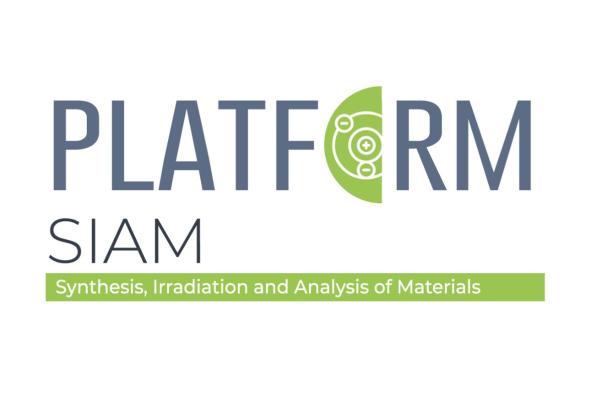
SIAM fait partie de NFFA.eu, un consortium paneuropéen regroupant 24 partenaires internationaux, dont 13 nanofonderies et LSF situées au même endroit. Plus de 180 techniques sont actuellement à la disposition des utilisateurs dans le domaine des nanosciences et des nanotechnologies.
